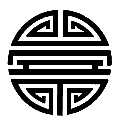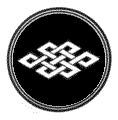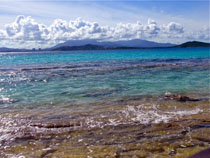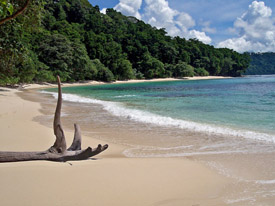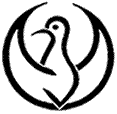 |
|||||||
|
|
|||||||
|
|||||||
|
|
|
 |
| |
|||||||
| |
|||||||
|
Class Syllabus: study-groups for the treatment
of chronic pain, injury and stress
Class Format: Class Notes 1: Posterior torso-thoracolumbar aponeurosis paraspinal muscles: erector-spinae group, multifus, rotatores, intertransversari, lamina groove clearing; trapezius--cervical and upper sections treated in prone position, levator scapulae, cervical lamina prone, sub-occipital muscles prone, occipitalis, application of moist heat and Herbal Liniments on treated area; cervical lamina release supine, cervical rotation, sternocleidomastoid (SCM), sub-occipital muscles supine, advanced neck stretches, scalenes, longus coli; neck treated from the lateral position. Class Notes 2: Low Back Routine: Lower erector spinae group; thoracolumbar aponeurosis, quadratus lumborum, superior iliac crest, gluteus maximus, medius and minimus, pelvic ligaments: sacroiliac, sacrotuberous, and iliolumbar; coccyx, tendon insertions on the greater trochanter of the femur, six deep lateral hip rotators, iliotibial band, tensor fasciae latae, iliacus and psoas Class Notes 3: Shoulder Routine: Rhomboids major and minor, joint range of motion from the prone postition, serratus posterior superior, infraspinatus, posterior deltoid and teres major and minor, upper latissimus dorsi from the prone position, supraspinatus, trapezius: fibers of the upper trapezius, skin rolling the posterior torso to separate adhesion, tendons of the trapezius on the clavicle and the spine of the scapulae, muscles treated laterally recumbant: deltoids (3 sections) teres major and minor, subscapulis, serratus anterior, pectoralis major and minor from the supine position, subclavius, teres minor and major, subscapulis, and serratus anterior treated from the supine position, treatment of 3 tendons on the coracoid process of the scapulae, joint range of motion from the supine postion Class Notes 4: Arms,forearms and hands: tendon of 3 muscles on the coracoid process of the scapulae, coracobrachialis, biceps brachii, brachialis, tendons and muscles surrounding the olecranon process of the ulna, anconeus, triceps brachii, forearm muscles: extensors and flexors muscle groups, wrist/finger/hand treatment, pollicis muscles, joint range of motion for the wrist, fingers and hands Class Notes 5: Leg Routine: anterior and posterior--anterior lower leg tendon of tibialis anterior on the tibial shaft, tibialis anterior, extensor hallucis longus, extensor digitorum longus, peroneus longus, terius and brevis; patella, anterior thigh: quadricep femoris group, adductors/femoral triangle, tendons of the adductor group in the groin area, pubic bone attachments of the pectinius, adductor longus, gracilis and adductor brevus; tendon of the adductor magnus on the ischial tuberosity, attachments of the medial knee of the sartorius, gracilis and semitendonosis: posterior leg--achilles tendon, gastrocnemius, soleus, plantaris, popliteus: posterior thigh--hamstrings, attachment of hamstrings on the ischial tuberosity, iliobial band from the prone position, foot routine--posterior and anterior . Class Notes 6: Advanced Routines: advanced lamina groove clearing, advanced occipital ridge routine, segmental neuropathy; treatment of intercostal muscles, rectus abdominus, pyramidalis, external/internal obliques, transversus abdominus, psoas, iliacus, general abdominal treatment, skin rolling and fascial release from the pubic bone to the acromioclavicular joint, diaphragm treatment and release Class Notes 7: Cranium/Face/ Jaw/Scalp/Anterior Neck: corrugator, orbicularis oculi, sinus tap, treatment of sinus points, levator palprebrae superioris, levator labii superioris, eye routine; superior rectus, superior oblique, lateral rectus, inferior oblique, inferior rectus, and medial rectus; treatment of cranial aponeurosis, temporal plate, zygomatic arch, temporalis, superior sagittal sinus, auricularis anterior, superior and posterior, external t.m.j. area, external masseter, pterygoids--medial and lateral from outside the mouth; inter-oral treatment of internal masseter, lateral and medial pterygoids, tendon of the temporalis, soft palate with the tensor palatini and the levator palatini, muscles under the tongue--hypoglossus, chrondoglosssus, styloglossus and genioglossus, general mouth clearing routine; Outside the mouth--tendon of the sternocleidomastoid and digastric muscle, muscles and ligaments attaching to the styloid process (styloglossus,stylophrangeus and stylohyoid muscle,stylohyoid ligament and stylomandibular ligament), tissues under the mandible, muscles of the face- zygomaticus major and minor, orbicularis minor and major, bucinator,orbicularis oris,mentalis, depressor labii inferioris, transversus menti, and depressir anguli oris: treatment inside the nose, muscles of the anterior neck: platysma, sternocleidomastoid, scalenes--anterior, medius and posterior, longus coli and ending with advanced neck stretches/range of motion
Each routine is presented in one day, with the format of a morning demonstration presented on a model, followed by a lunchbreak. The afternoon consists "hands-on" practice as students pair up and take turns giving and receiving the routine that was demonstrated in the morning. There are clearly illustrated class notes provided for ease of learning and maximum retention of material. Peggy is available to show students again, the routines that were demonstrated in the morning. Students are expected to stay until completion, with the agreement that everyone both gives and receives the work. Requirements: A set of t-bars, developed by Dr. Peggy Daugherty ND, are a required purchase for taking this course.
Integrative Cranial Therapy study group
The instructor for both trainings is Peggy Daugherty ND Contact her for more information Denver, Colorado 303-596-5431 |
|
|
|
| [Home] [Instruction] [Styles] [Sessions] [Instructor] [Contact] |
Copyright 2023 For more information please contact: peggyd@manual-medicine.com |
